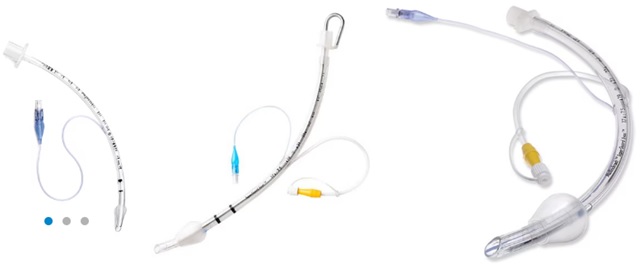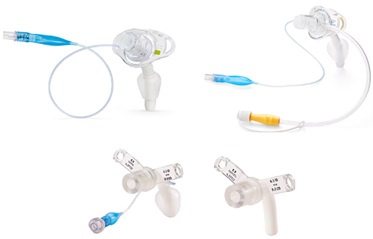| Intubation: |
|
|
Intubation is a process where a healthcare provider inserts a tube through a personís mouth or nose, then down into their trachea (airway/windpipe). The tube keeps the trachea open so that air can get through. The tube can connect to a machine that delivers air or oxygen.
Sometimes
referred to as tracheal intubation or endotracheal
intubation, intubation keeps the airway open so air can get to the lungs. It is usually performed in a hospital during an emergency or before surgery. |
|
|

|
|
|
Intubation is a common procedure that can be the difference between life and death in an emergency. In most cases, a person will fully recover from intubation within a few hours to days and will have no long-term side effects. The procedure is necessary when your airway is blocked or damaged or you canít breathe spontaneously. |
|
| Some common conditions that can lead to intubation include: |
|
- Airway obstruction (something caught in the airway, blocking the flow of
air)
|
- Cardiac arrest (sudden loss of heart
function)
|
- Injury or trauma to your neck, abdomen or chest that affects the
airway
|
- Loss of consciousness or a low level of consciousness, which can make a person lose control of the
airway
|
- Need for surgery that will make you unable to breathe on your
own
|
- Respiratory (breathing) failure or apnea (a temporary stop in
breathing)
|
- Risk for aspiration (breathing in an object or substance such as food, vomit or
blood)
|
|
|
Being intubated and being on a ventilator are related, but theyíre not exactly the same. Intubation is the process of inserting an endotracheal tube (ETT) into the airway (windpipe). The tube is then hooked up to a device that delivers air. The device can be a bag that a healthcare provider squeezes to push air into your body, or the device can be a ventilator, which is a machine that blows oxygen into your airway and lungs. However, a ventilator can also deliver air through a mask, instead of using a tube. |
|
|
| Tracheostomy: |
|
| A tracheostomy (also called a tracheotomy) is an opening surgically created through the neck into the trachea (windpipe) to allow air to fill the lungs. After creating the tracheostomy opening in the neck, surgeons insert a tube through it to provide an airway and to remove secretions from the lungs.
The person with a tracheotomy breathes through the tracheostomy tube
(trach tube) rather than through the nose and mouth. A tracheostomy may be temporary or permanent. |
|
|

|
|
| The incision in the windpipe
is made to relieve an obstruction to breathing. The procedure
provides an alternate conduit to
help air and oxygen reach the lungs. A person with a tracheostomy breathes through a tracheostomy tube inserted in the opening rather than through the nose and mouth.
Technically, the term tracheotomy refers to the incision (cut) created in the windpipe. The term tracheostomy refers to the opening itself (also called a stoma.) However, the two terms are often used interchangeably. |
|
| The
three most common reasons for a tracheostomy
procedure include: |
|
- To help breathing if the throat is blocked
|
- To remove excess fluid and mucus from the lungs
|
- To deliver oxygen from a machine called a ventilator to the lungs
|
|
|
A tracheostomy may be temporary or permanent and may use different types of tubes depending on the individual situation. |
|